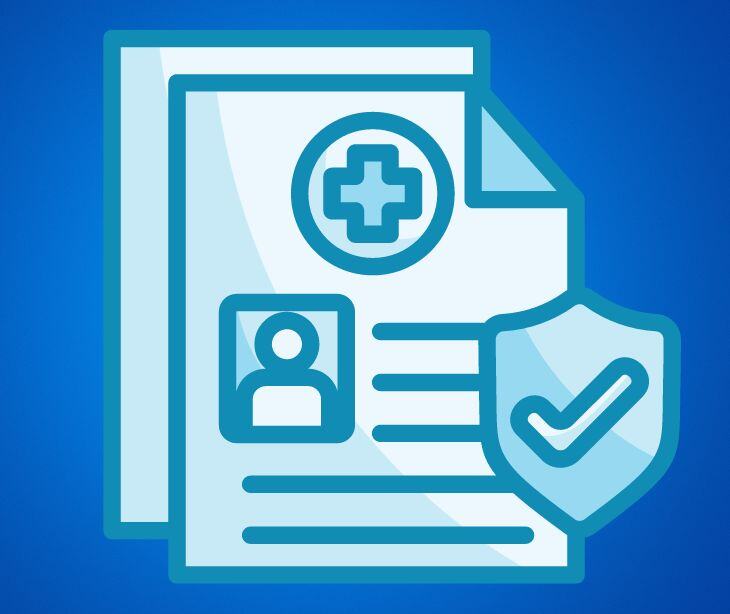
When implemented collectively, administrative safeguards, technical safeguards, and physical safeguards work together to ensure the protection and security of patient information. An in-depth understanding of each one allows healthcare organizations to understand their responsibilities in protecting patient data.
Understanding administrative safeguards
The HIPAA Security Rule establishes a framework for protecting electronic protected health information (ePHI) held by covered entities, including healthcare organizations, health plans, and healthcare clearinghouses. Administrative safeguards are one of the three main categories outlined in the HIPAA Security Rule, alongside physical and technical safeguards.
Related: What are administrative, physical and technical safeguards?
Implementing administrative safeguards
- Risk assessment: Conduct a thorough risk assessment to identify potential vulnerabilities and risks to patient information. This assessment helps determine the administrative safeguards needed to address these risks effectively.
- Security policies and procedures: Develop comprehensive security policies and procedures that outline the organization's approach to protecting patient information.
- Security officer: Designate a security officer or team responsible for overseeing the development, implementation, and maintenance of administrative safeguards. This individual or team should have a clear understanding of security best practices and regulatory requirements.
- Workforce training and awareness: Provide regular training and awareness programs to educate employees about their roles and responsibilities in maintaining security. This includes training on handling sensitive information, recognizing and reporting security incidents, and following established policies and procedures.
- Access controls: Implement access controls to ensure only authorized individuals can access patient information. This may involve user authentication mechanisms, user role-based access controls, and regular reviews of access privileges.
- Incident response and reporting: Establish clear procedures for responding to security incidents, including protocols for detecting, reporting, and containing potential breaches. This should include a process for notifying affected individuals and the appropriate authorities as required by regulations.
- Business associate agreements: If the organization shares patient information with business associates, ensure appropriate agreements are in place. These agreements outline the responsibilities and obligations of the business associates in safeguarding patient information.
- Regular audits and assessments: Conduct periodic audits to evaluate the effectiveness of administrative safeguards and identify any areas for improvement or vulnerabilities. This includes internal audits as well as external assessments by independent security experts.
- Documentation and recordkeeping: Maintain accurate and up-to-date documentation of administrative safeguards, including policies, procedures, training records, incident reports, and risk assessments. This documentation helps demonstrate compliance and provides a reference for ongoing security efforts.
Related: How to conduct a HIPAA compliance audit
Best practices to navigate the administrative safeguards
- Establish a security committee: Form a dedicated security committee or team comprising representatives from different departments within the organization. This committee can oversee the implementation and maintenance of administrative safeguards, coordinate security efforts, and facilitate communication across the organization.
- Conduct regular security awareness training: Provide targeted and role-based security awareness training to all employees. Cover topics such as identifying phishing emails, secure password practices, physical security protocols, and the necessity to report security incidents. Consider using interactive training modules and simulated phishing exercises to reinforce learning.
- Implement multi-factor authentication (MFA): Require multi-factor authentication for accessing sensitive systems and applications.
- Enforce the least privilege principle: Implement the principle of least privilege, granting employees the minimum access privileges necessary to perform their job functions. Regularly review and update access permissions based on job roles and responsibilities, ensuring employees only have access to the data and systems they need.
- Implement data loss prevention (DLP) solutions: Deploy DLP solutions that monitor and control data movement within the organization. These solutions can help prevent the unauthorized transmission of sensitive information and detect and mitigate potential data breaches or policy violations.
Benefits and impact of administrative safeguards
Administrative safeguards help protect sensitive patient information from unauthorized access, use, or disclosure. Furthermore, healthcare practices can proactively identify vulnerabilities and mitigate risks by conducting regular risk assessments, developing incident response plans, and monitoring security measures.
A well-designed strategy to adhere to administrative safeguards streamlines operations by establishing clear policies, procedures, and guidelines. This leads to better organization and coordination within the healthcare practice, ensuring that employees understand their roles and responsibilities regarding information security.
Challenges with administrative safeguards
A potential challenge healthcare organizations may face is resource allocation towards administrative safeguards, as it requires sufficient financial resources, personnel, and time. Additionally, establishing a culture of security and obtaining buy-in from all levels of the organization can be difficult. This culture impacts the development of training and requires healthcare organizations to ensure they account for staff who require extra assistance with implementing or learning new policies.
Keeping up with rapidly advancing technology and its associated security risks is another ongoing challenge. This might lead healthcare organizations to third-party services to assist with streamlining administrative processes. This opens the issue of managing third-party vendors and their compliance with HIPAA regulations when dealing with ePHI.
Subscribe to Paubox Weekly
Every Friday we'll bring you the most important news from Paubox. Our aim is to make you smarter, faster.



